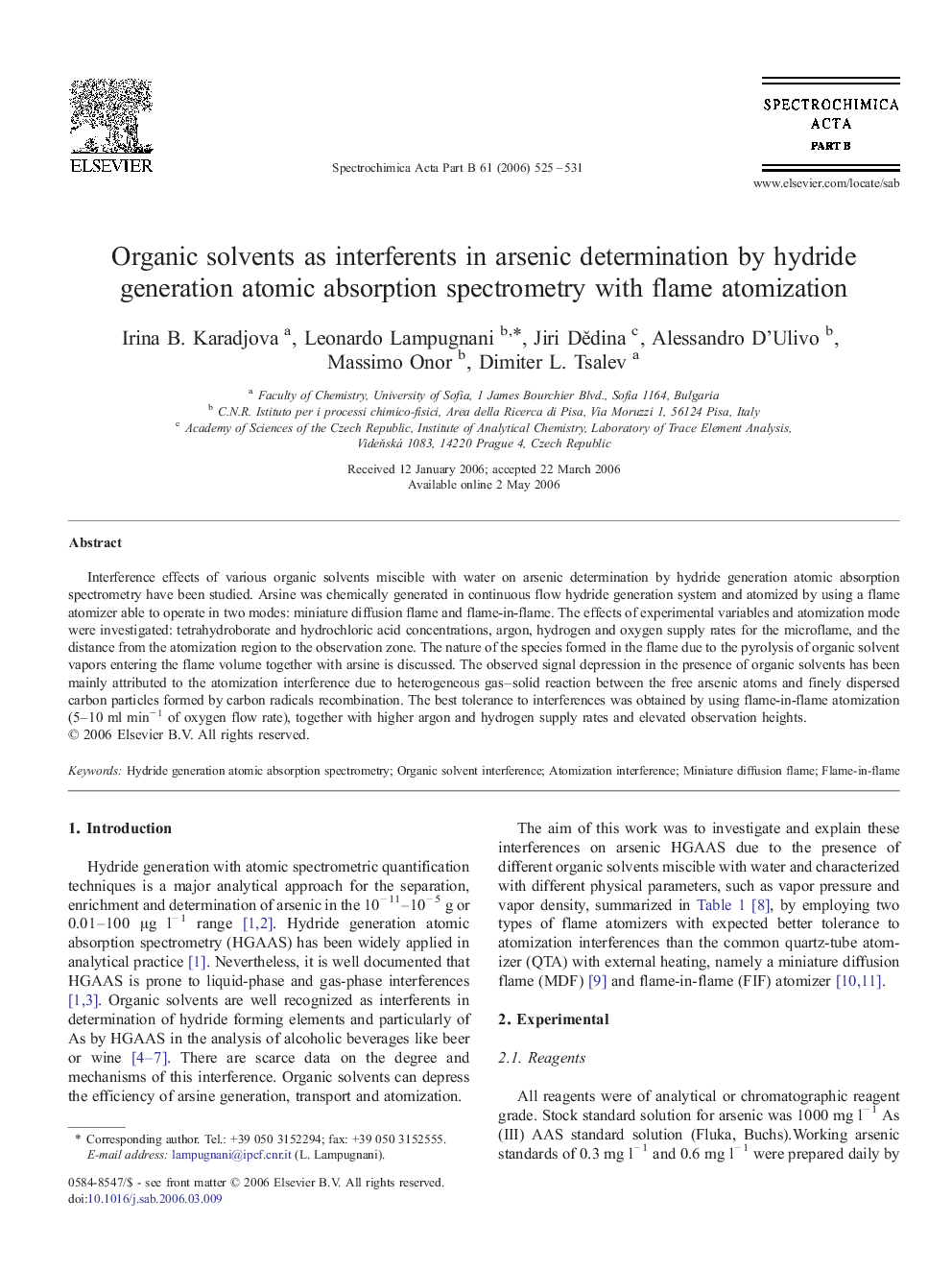| Article ID | Journal | Published Year | Pages | File Type |
|---|---|---|---|---|
| 1241082 | Spectrochimica Acta Part B: Atomic Spectroscopy | 2006 | 7 Pages |
Interference effects of various organic solvents miscible with water on arsenic determination by hydride generation atomic absorption spectrometry have been studied. Arsine was chemically generated in continuous flow hydride generation system and atomized by using a flame atomizer able to operate in two modes: miniature diffusion flame and flame-in-flame. The effects of experimental variables and atomization mode were investigated: tetrahydroborate and hydrochloric acid concentrations, argon, hydrogen and oxygen supply rates for the microflame, and the distance from the atomization region to the observation zone. The nature of the species formed in the flame due to the pyrolysis of organic solvent vapors entering the flame volume together with arsine is discussed. The observed signal depression in the presence of organic solvents has been mainly attributed to the atomization interference due to heterogeneous gas–solid reaction between the free arsenic atoms and finely dispersed carbon particles formed by carbon radicals recombination. The best tolerance to interferences was obtained by using flame-in-flame atomization (5–10 ml min− 1 of oxygen flow rate), together with higher argon and hydrogen supply rates and elevated observation heights.
